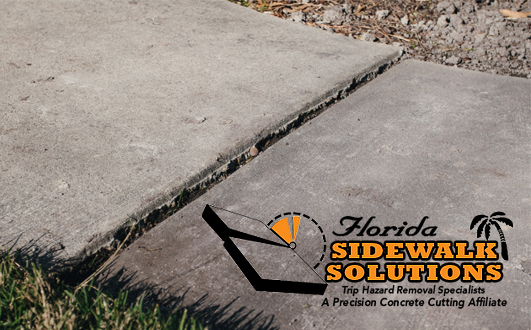
Pathway perils are a significant concern, impacting accessibility and safety in public spaces, and residential environments. From uneven pavements to trip hazards, these overlooked obstacles can cause serious accidents and create significant safety concerns, especially in areas with high pedestrian traffic. This thorough guide explores pathway perils, examines their causes, and offers practical solutions to address these issues. It delves into the importance of assessing pathways for hazards, discusses optimal practices in pathway maintenance and design, and offers a scope of solutions, from simple repairs to complete redesigns. The following sections will cover thorough assessments, material selection, and solutions.
Understanding Pathway Perils: A thorough Overview
determineing and Assessing Trip Hazards
Uneven pavement, protruding objects, and inadequate lighting are just a few examples of pathway perils. These hazards can be especially dangerous for people with disabilities, the elderly, and children. The first step in addressing pathway perils is a thorough assessment that identifies existing hazards and evaluates potential risks. This process typically involves an on-site inspection of the affected pathway, including close examination of the pavement surface, alignment, and any surrounding attributes. Thorough planning and study should ensure the most effective plan for every pathway.
Factors Influencing Pathway Design
Several key factors influence the design of pathways to mitigate trip hazards. Designing walkways that conform to universally accepted accessibility standards, ensuring sufficient space for wheelchairs and strollers, and incorporating slip-resistant surfaces can all help enhance safety. A qualified pathway design professional can advise on materials and design elements to account for climate and pedestrian traffic patterns.
Addressing Uneven Pavements: Solutions for a Smooth Transition
Surface Repairs and Maintenance
Uneven pavements can be a major source of trip hazards. Addressing these issues involves a scope of solutions, including patching, resurfacing, or even complete replacement of damaged sections. Repairing pavement cracks and potholes is crucial to maintain the safety of the pedestrian walkway. A well-maintained surface is key to preventing accidents. Maintaining consistent surfaces is vital in promoting a sense of security for all pedestrians.
Material selection for Pathway Surfaces
selecting the right materials is crucial to ensure both durability and safety. High-quality asphalt, concrete, or even specialized permeable paving materials can contribute significantly to a more resilient pathway system. Analyzing local weather conditions is vital, as materials should withstand the local climate for consistent performance.
Related Post : The Loneliness of Neglected Exteriors: Finding Community in Home Improvement
Preventing Trip Hazards: A Proactive Approach
Protruding Obstacles and Debris Removal
Removing protruding obstacles and debris is essential in preventing trips and falls. Regular inspections and clean-up schedules can help determine and eliminate hazards. This often includes keeping the pathway clear of obstacles and debris such as rocks, tree roots, or misplaced objects. A crucial facet of proactive hazard mitigation is continuous monitoring. The environment can change rapidly, requiring regular adjustments.
Lighting and Signage
Proper lighting and clear signage play a significant function in enhancing visibility and guiding pedestrians. Well-maintained lighting improves visibility and helps create a safer environment for all users. This should include appropriate signage such as cautionary signals or wayfinding markers. Strategic lighting enhances visibility, contributing to a safer pathway for everyone.
Improving Accessibility: Designing for Diverse Needs
Universal Design Principles
Implementing universal design principles is essential to create pathways that are accessible to everyone. This includes considering the needs of people with disabilities, the elderly, and those with mobility challenges. Following these instructions and standards, you can ensure a universally accessible walkway for all individuals.
Path Width and Surface Characteristics
Ensuring appropriate path widths and selecting appropriate surface characteristics are crucial considerations. The pathway width should be sufficient to accommodate pedestrian traffic patterns and allow ample space for users to maneuver safely and comfortably. The surface should be smooth and slip-resistant to prevent slips and falls, especially in wet conditions.
Case Studies and Examples of achievementful Implementations
achievementful Implementations and optimal Practices
Numerous case studies illustrate the positive impact of implementing thorough pathway hazard mitigation strategies. These projects often show a marked reduction in pedestrian accidents and a significant improvement in overall safety. This section explores achievementful implementations of these practices. These optimal practices have improved pedestrian accessibility and created safer pathways.
Maintaining Pathways for Long-Term Safety
Creating Pathways for the Future: The function of Technology
In conclusion, pathway perils, or uneven walkways and trip hazards, pose significant safety risks in various environments. Addressing these hazards through careful assessment, proper materials, and proactive maintenance is crucial for preventing accidents and ensuring a safe pedestrian experience. By implementing the solutions discussed, communities can significantly improve their walkability and create a more accessible and user-friendly environment. If you’re looking to enhance pathway safety in your area, contact a qualified professional for a thorough pathway peril assessment and recommendations. This will allow you to avoid potential hazards and create a more accessible and user-friendly environment.